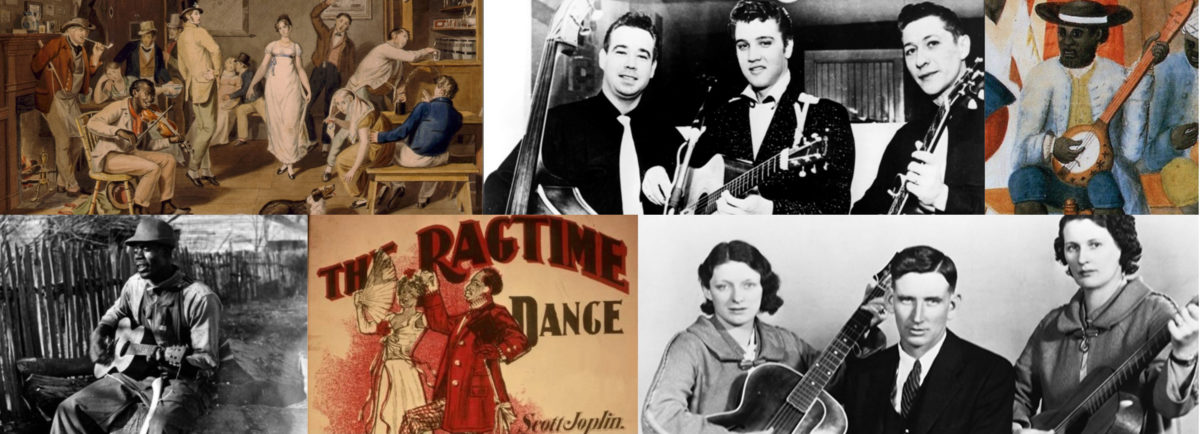Audio Investigation Slide
The Wisconsin Emigrant: Audio Investigation Slide (edited lyrics)
The Wisconsin Emigrant: Audio Investigation Slide (complete lyrics)
-
- Click one of the links above to launch the slide deck (2 slides).
- The slide deck with "complete lyrics" includes the last verse of the song. These lyrics feature an imagined scenario depicting graphic violence against settlers at the hands of Native Americans.
- If you deem this verse inappropriate for your student population, a slide deck with "edited lyrics" is provided. The response prompts are the same in both decks, but the edited version ends the audio prior to the last verse.
- Click the media player in the bottom right corner of the slide to begin audio playback of the song.
- Invite students to respond to the following questions shown on the slide:
-
- According to the lyrics, does the husband want to move? Why or why not?
- According to the lyrics, does the wife want to move? Why or why not?
-
- Advance to slide #2.
- Invite students to respond to the following questions shown on the slide:
- What do you think the singer means by “For the stone that keeps rolling will gather no moss?”
- Why would these New Englanders consider moving to the western frontier rather than to the warmer “Southern” states?
- If you were in their position at the time, would you have chosen to move? Why or why not?
- Click one of the links above to launch the slide deck (2 slides).
Recommendations
This song is useful for introducing a lesson on early westward expansion, Manifest Destiny, or even the roots of Free Soil politics.
You can ask students to discuss mobility and economic opportunity as contemporary concepts. How does the song’s back-and-forth resemble conversations twenty-first-century Americans have when considering a move? Why do people move away from their hometowns? This conversation can serve as a springboard to discussing regional economies, land value, the role home ownership plays in American imaginaries and identity formation, or the rhetoric surrounding “pioneers” and the frontier. What role does mobility play in the American story? Are Americans today more or less likely to move than they were in the past?
Instructors may want to ask students about the land itself. Much of the textual and artistic imagery surrounding westward expansion depicts a sense of empty land waiting for white settlers as vanguards of civilization. Do students believe this? Discuss Native American geographies and cultures. How did the environmental changes brought by white settlement change the way Native Americans lived? What happened to Native Americans who lived in the Northwest Territory after the Northwest Ordinance?
The gendered nature of the singer-couple’s discussion may also serve as an opportunity to discuss the gendered stereotypes inherent in Americans’ self-image and in the Western imaginary. What and who do we think of when we think of life on the frontier? Are African Americans prominently featured in images of the West? Why or why not? What does this say about the labor, politics, and rhetoric of westward expansion? How did land use, agricultural practices, and demographic composition differ between the North, South, and West? This could be revisited when introducing the antebellum Free Soil movement.
Vocabulary
yield- to provide or produce an agricultural product
Additional Resources
Native American Perspectives
As settlers advanced westward, the United States government routinely forced Native American tribes and nations to relocate, often through broken treaties and violent confrontations. Many Native American ways and customs were altered or erased. The following resources are useful in considering westward expansion from the perspective of these displaced peoples.
13 Poems by Joy Harjo
Joy Harjo is a performer and writer of the Muscogee (Creek) Nation. In 2019 she was named the 23rd Poet Laureate of the United States, and the first Native American to be so appointed. The first 8 poems on this website are from her book, Conflict Resolution for Holy Beings (2015). The remaining 5 poems are from earlier works. More information and resources are available at JoyHarjo.com.
Native American Classroom Materials at the Library of Congress
The Library of Congress provides classroom materials and professional development to help teachers effectively use primary sources from the Library's vast digital collections in their teaching. The site linked above includes information and resources related to Native American history and policy from the time of European contact through today.
Native Land
This website includes an interactive map showing the boundaries of Indigenous nations in various parts of the world. It advocates and provides resources for territory acknowledgment, a practice that inserts awareness of Indigenous presence and land rights in everyday life.
Primary Source Strategies
Printable worksheets with response prompts that guide students in analyzing songs as primary sources.

